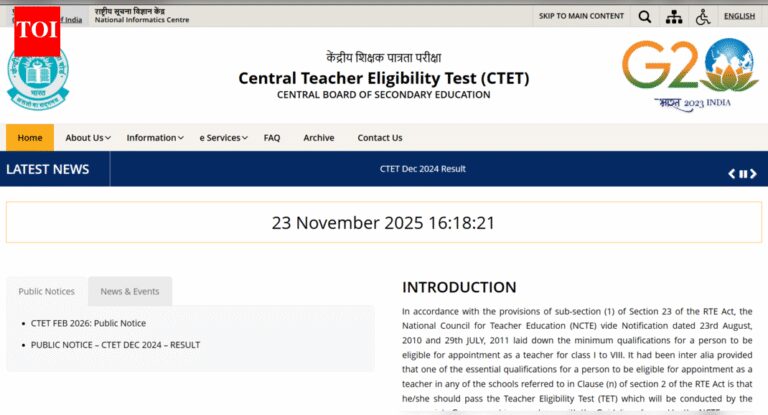
The Government of India has announced that the four consolidated Labour Codes, the Code on Wages (2019), Industrial Relations Code (2020), Code on Social Security (2020), and the Occupational Safety, Health and Working Conditions Code (2020) have been implemented from 21 November 2025. Their enforcement will replace 29 existing central labour laws that have been in place for several decades.The move marks a shift from a regulatory framework created during the pre-Independence and early post-Independence period, when the structure of India’s economy and employment patterns were significantly different. Successive committees and industry groups have flagged the need to update and consolidate these laws, arguing that the earlier framework had become fragmented and difficult to administer. The four Codes bring these provisions under a unified structure intended to simplify rules, expand coverage and address long-pending procedural inconsistencies.
Simplification at the core: Breaking the bureaucratic gridlock
Before the Codes, India’s labour framework resembled a bureaucratic maze:
- 1436 provisions
- 31 returns
- 181 forms
- 84 registers
- Eight separate registrations
- Four separate licences
The new regime introduces clarity where confusion once prevailed, one registration, one licence, one electronic return. This shift cuts compliance costs, encourages formalisation, and maintains worker protections while reflecting the administration’s conviction that ease of doing business must accompany ease of living for workers.
The wage code : A new grammar of wage justice
The Code on Wages marks a decisive departure from the past:
- Statutory minimum wages now cover 100% of India’s workforce, up from roughly 30%.
- A national floor wage, linked to minimum living standards, ensures no state can set wages below a central benchmark.
- Wage-setting now relies on scientific criteria such as regional zones, temperature, humidity, and skill levels.
- Every worker, regardless of salary, receives legal safeguards for timely payment and regulated deductions.
- Overtime is fixed at twice the normal rate.
- Gender discrimination, including against transgender workers, is explicitly prohibited.
Industrial relations code: Stability meets flexibility
The Industrial Relations Code consolidates three major laws from 1926, 1946, and 1947 into a unified framework. Its key interventions include:
- Fixed-Term Employment with full parity in wages and benefits, including gratuity after one year.
- Re-skilling Fund, mandating 15 days’ wages for every retrenched worker, deposited within 45 days.
- Raising the threshold for government approval for layoffs or closure from 100 to 300 workers, easing procedural friction without compromising compensation.
Expanded definition of “worker” to include journalists, sales promotion employees, and supervisors earning up to ₹18,000.This code represents a balance, a system where enterprises find room to operate and workers find equitable protections.
Social Security Code
The Social Security Code is arguably the most transformative in quantitative terms:
- ESIC coverage now extends pan-India, with establishments under 10 workers allowed to opt in.
- All hazardous workplaces—regardless of size—are automatically included.
- EPF inquiries capped at two years, ending the era of prolonged or reopened cases.
- Appeals require a 25% deposit, down from 40–70%.
- Gig and platform workers receive statutory recognition for the first time.
- Aggregators must contribute 1–2% of turnover (capped at 5% of worker payouts) to a social security fund.
- Gratuity after one year for fixed-term workers.
This Code aligns India’s welfare system with the realities of a digital and platform-driven economy.
OSH code: Safety, dignity, and modern employment norms
The Occupational Safety, Health and Working Conditions Code consolidates 13 laws and introduces sweeping changes:
- A uniform threshold of 10 employees for registration.
- A broader definition of inter-state migrant workers, enabling portability of benefits and annual travel allowances.
- Mandatory appointment letters, pushing millions into documented employment.
- Night-shift flexibility for women with consent and safety protocols.
- Eight-hour workday, 48-hour workweek, and double-rate overtime mandated.
- Safety Committees for establishments with 500 or more workers.
- A single National Occupational Safety and Health Advisory Board, replacing six fragmented bodies.
- This Code embeds safety and dignity into the very structure of employment.
Why this reform was long overdue
Many of India’s labour laws were conceived in a different era, stretching back to the 1930s–1950s, when the economy bore little resemblance to today’s dynamic, digitised, and diversified labour landscape. While most major economies modernised their labour architecture over the past few decades, India continued to operate within a labyrinth of colonial-era provisions spread across 29 Central laws. Their fragmented nature bred uncertainty, encouraged opacity, increased disputes, and burdened enterprises with compliance-heavy processes. The four Labour Codes address this structural inertia, replacing outdated frameworks with a governance model designed for a high-growth economy, one that empowers workers, reduces friction, and supports industries navigating the new world of work.
A structural reset: Before and after the labour codes
The transformation brought by the Labour Codes becomes clearer in direct comparison.Formalisation of EmploymentBefore: No mandatory appointment letters; informal arrangements dominated.After: All workers must receive mandatory appointment letters, bringing formal recognition, job stability, and enforceable terms of employment.Social Security Coverage
- Before: Limited to select sectors; gig and platform workers were outside the safety net.
- After: Universalisation of social security under the Social Security Code.
- Gig and platform workers included for the first time.
- Workers gain access to PF, ESIC, insurance, and social protection schemes.
Minimum WagesBefore: Applied only to scheduled industries; large sections were uncovered.After: Under the Code on Wages, all workers receive the statutory right to minimum wages along with guaranteed timely payment.Preventive Healthcare
- Before: No legal obligation for annual health check-ups.
- After: Employers must provide free annual health check-ups for workers above 40, embedding preventive healthcare into the workplace culture.
Timely WagesBefore: No mandatory timelines for wage payments.After: Employers are legally bound to ensure timely wages, strengthening financial stability and reducing stress for workers.
Women’s Workforce Participation
Before: Night work for women was heavily restricted.After: Women may work at night and in any occupation, subject to consent and protective measures.This opens doors to higher-paying jobs and stronger participation in sunrise sectors.ESIC CoverageBefore: Restricted to notified areas; establishments with fewer than 10 workers were mostly excluded.After: ESIC becomes pan-India, voluntary for units with fewer than 10 workers, and mandatory even for single-worker hazardous units.Compliance Burden
- Before: Multiple licences, registrations, and returns across 29 laws.
- After: Single registration, single licence, and single electronic return, drastically reducing compliance complexity.
Modernisation at scale
The Code extends statutory minimum wages to the entire workforce—addressing long-standing inequities.Key features include:
- A national floor wage to prevent undercutting.
- Scientific wage-setting based on skill level, geography, temperature, and working conditions.
- Universal coverage for wage payment and deductions.
- Mandatory overtime at twice the normal rate.
- Explicit prohibition of gender and transgender wage discrimination.
- Modern enforcement via Inspector-cum-Facilitators and digital audits.
Industrial Relations Code
This Code merges three legacy laws into a modern industrial framework.Key reforms include:
- Fixed-Term Employment with full benefits parity and gratuity after just one year.
- Creation of a Re-skilling Fund requiring 15 days’ wages for every retrenched worker.
- Threshold for government approval for layoffs raised from 100 to 300 workers.
- Expanded definition of “worker” to cover journalists, sales staff, and supervisors earning up to ₹18,000.
Social Security Code
The Code represents India’s biggest welfare expansion in decades. Highlights include:
- Pan-India ESIC coverage, voluntary for small units.
- EPF inquiries time-bound to two years with no arbitrary reopening.
- Lower deposit for EPFO appeals (25%).
- Aggregators contributing 1–2% of turnover to gig worker welfare funds.
- Gratuity eligibility for fixed-term employees after one year.
OSH Code: Safety and Dignity as Legal Rights
This Code consolidates 13 laws to create uniform workplace standards.Key provisions:A uniform 10-employee threshold for registration.
- Comprehensive recognition of inter-state migrant workers with benefit portability and travel allowance.
- Compulsory appointment letters across establishments.
- Women’s right to work at night with safety protocols.
- A standard 8-hour workday, 48-hour workweek, and mandatory double-rate overtime.
- Safety committees for units employing 500 or more workers.
- A single, national-level advisory board replacing multiple earlier bodies.








